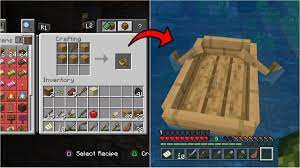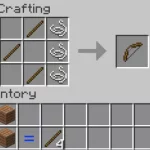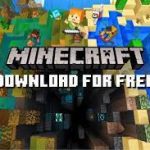Minecraft, the renowned sandbox video game, offers players an immersive and boundless world to explore and create. Developed by Mojang Studios, this pixelated masterpiece has captured the hearts and imaginations of millions of gamers worldwide. However, have you ever wondered what it takes to make your own version of Minecraft?
In this comprehensive guide, we will delve into the fascinating world of Minecraft creation, offering you insights into the intricate process of crafting your own version of this beloved game. Whether you are an aspiring game developer, a passionate Minecraft player, or simply curious about the behind-the-scenes magic, this guide is tailored to provide you with the necessary knowledge to embark on this exciting journey.
We will start by exploring the fundamental elements of Minecraft, such as the iconic block-based world, the variety of resources, and the diverse biomes. Understanding these core components is essential for creating a Minecraft experience that is both captivating and engaging.
Next, we will delve into the mechanics of game design, unraveling the secrets behind crafting innovative gameplay mechanics, building structures, and implementing captivating features that will keep players enchanted for hours on end. From designing landscapes and crafting intricate redstone circuits to creating unique mobs and immersive quests, we will cover a wide array of topics to help you bring your vision to life.

Conceptualizing Your Game
Before diving into the development process, it’s crucial to have a clear vision and concept for your game. Consider the key features that make Minecraft successful and brainstorm ideas that align with your creative vision. Think about the game mechanics, art style, world-building elements, and any unique aspects you’d like to introduce to differentiate your game from Minecraft.
Choosing a Game Engine
Selecting the right game engine is vital for developing your Minecraft-inspired game. Several popular engines, such as Unity and Unreal Engine, offer powerful tools and resources to simplify the development process. Research and evaluate different engines based on their capabilities, community support, ease of use, and compatibility with your target platforms.
Game Design and Mechanics
Once you have your concept and game engine in place, it’s time to focus on the game design and mechanics. Minecraft’s core mechanics include mining resources, crafting items, building structures, and surviving hostile creatures. While you can take inspiration from Minecraft, consider adding unique gameplay elements to make your game stand out. Experiment with features like additional biomes, new crafting recipes, advanced combat mechanics, or even magic systems to enhance player engagement.
Art Style and Assets
Developing a visually appealing game is essential for immersing players in your Minecraft-inspired world. Decide on an art style that complements your game’s theme and target audience. Whether you opt for pixel art, low poly, or realistic graphics, ensure consistency throughout the game. Create or acquire assets such as textures, models, animations, and sound effects that align with your chosen art style. Consider employing talented artists or utilizing online asset stores for high-quality resources.
World Generation and Procedural Content
Minecraft is renowned for its procedurally generated worlds, offering infinite exploration possibilities. Implementing a similar world generation system in your game can add depth and replayability. Research procedural content generation techniques, including noise algorithms, cellular automata, and randomization methods. Develop a robust system that generates diverse landscapes, caves, structures, and other environmental elements to create a sense of discovery and adventure.
Multiplayer and Networking
To enhance the social aspect of your game, consider incorporating multiplayer functionality. Allow players to join together in a shared world, collaborate on building projects, or engage in competitive gameplay. Implement networking systems that facilitate online multiplayer interactions, ensuring smooth communication between players. Consider integrating chat features, friend lists, and matchmaking systems to enhance the multiplayer experience.
Iterative Development and Testing
Game development is an iterative process, and constant testing and refinement are crucial for creating a polished end product. Set up a testing framework that allows you to identify and address bugs, balance gameplay mechanics, and gather feedback from players. Regularly playtest your game to evaluate user experience, difficulty levels, and overall enjoyment. Continuously iterate and make improvements based on user feedback to create a satisfying gameplay experience.
Launching and Community Building
Once your game reaches a stable and enjoyable state, it’s time to plan for its launch. Create a website or landing page where you can showcase your game, share updates, and build a community of passionate players. Leverage social media platforms and game development forums to promote your game, engage with players, and generate interest. Consider offering early access or beta versions to gather feedback and build anticipation before the official release.
Conclusion
Developing a Minecraft-inspired game requires a combination of creativity, technical skills, and perseverance. By following the steps outlined in this guide, you can embark on an exciting journey to create your own unique gaming experience. Remember to stay true to your vision, iterate based on feedback, and embrace the joy of bringing your imagination to life. Good luck, and may your Minecraft-inspired game captivate players around the world!




![Shadow Fight Shades MOD APK[Unlimited Gems, God Mode]v1.3.2](https://apkshub.in/wp-content/uploads/2024/04/Shadow-Fight-Shades-MOD-APKUnlimited-Gems-God-Modev1.3.2-1-75x75.webp)










